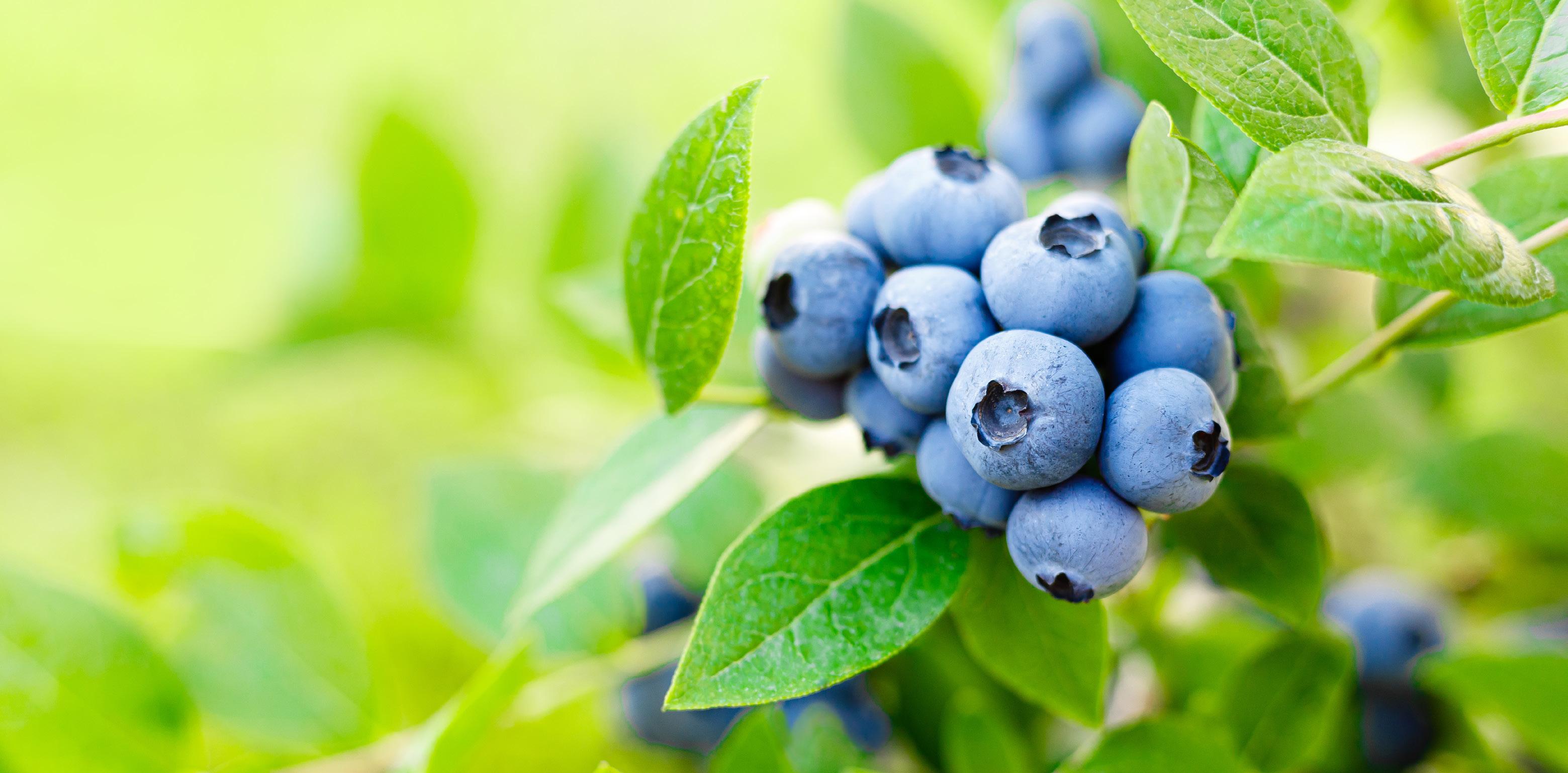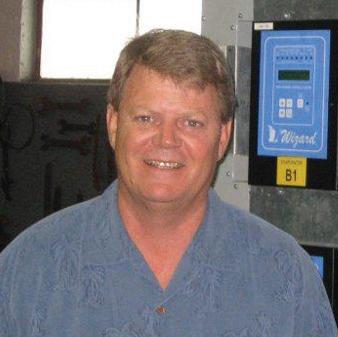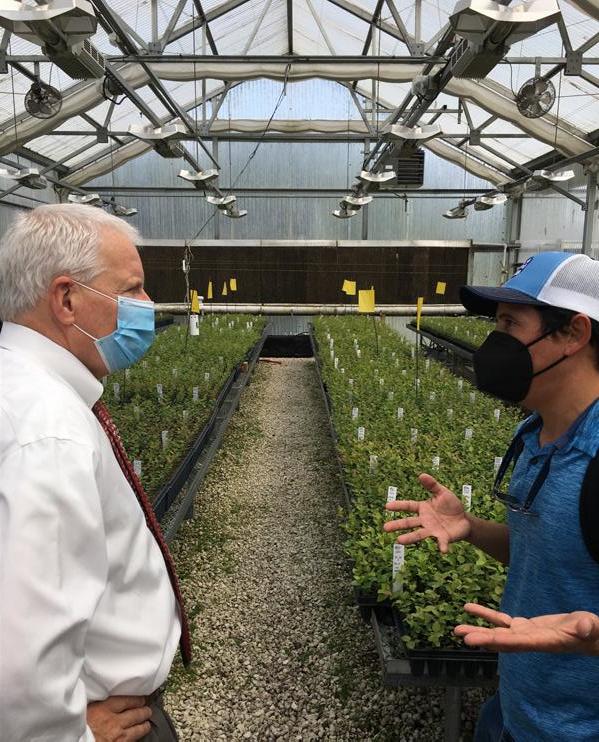
10 minute read
BLUEBERRY REBOUND
2021 Harvest Up 4.9 Million Pounds From Last Year
by PAUL CATALA
Advertisement
BBLUEBERRY GROWER KYLE HILL credits man and machine for helping to overcome the blueberry blues.
In 2020, the Florida Blueberry Growers Association reported a season yield of only 17 million pounds of blueberries on about 5,500 acres, harvested statewide from mid-April through May.
But through technological innovations and upgrades in mechanized harvesters, the waning of the coronavirus pandemic and freezes that hit blueberry competitors such as Texas, Florida blueberry growers took in 21.89 million pounds for 2021, close to the 22.7 million pounds harvested in 2019 and before the pandemic.
Hill — who works for Southern Hill Farm in Clermont – owns a mechanical harvesting company, H&C Harvesting, based in Mount Dora. He says 2021 was better not only because of the loosening of coronavirus restrictions, but also better labor-saving equipment such as back loaders and top loaders.
“As your prices go down with the market dropping, the hand labor stays the same, never goes down. With machines, you’re increasing your market, sometimes by 100 percent – it makes a big difference,” he adds.
Although exact harvest numbers don’t come out until about a year and a half after a season, the economic impact of the Florida blueberry harvest for 2021 is predicted to be up to $200 million, says Brittany Lee, executive director of the Florida Blueberry Growers Association.
Lee says in 2020 and the beginning of the pandemic there was a 70 percent sales loss compared to that same week in the first week of April 2019. She says consumers weren’t shopping in stores and that made a significant impact. But she says 2021 sales have been strong.
Lee – FBGA executive director since 2019 and vice president and manager of the 112-acre Florida Blue Farms in Waldo – says she also sees more use of machine harvesting as one of the best ways to continue building successful farming operations and increasing harvest numbers. She says in the wake of the pandemic, relying less on manual labor has helped blueberry farmers be more productive. “Five years ago, machine harvesting for Flor-
Five years ago, machine harvesting for Florida blueberries was still in a trial phase for most growers. But now, it is a significant part for medium to large growers. Machine harvesting helps harvest costs, which allows us to remain competitive as production pressures from Mexico have been increasing.
— BRITTANY LEE, EXECUTIVE DIRECTOR OF THE FLORIDA BLUEBERRY GROWERS ASSOCIATION
ida blueberries was still in a trial phase for most growers,” says Lee, who lives in Gainesville. “But now, it is a significant part for medium to large growers. Machine harvesting helps harvest costs, which allows us to remain competitive as production pressures from Mexico have been increasing.”
Michael Hill, owner of H&A Farms in Mount Dora – the largest blueberry packer in Florida – says the use of harvesting technology has allowed more Florida blueberries to reach more U.S. markets.
Hill says as more technology is added to the growing and harvesting process, it’s easier to more efficiently and broadly ship product.
“A big problem we are facing is with inflation,” he says. “The cost of everything else around us is going up, including our cost to grow and pack our product, but the sales price is not rising with inflation. Since this is a national inflation issue and not a global one, our competitors can keep shipping product at the same price or lower because their costs haven’t inflated like ours. This will be our challenge going forward.” As part of the blueberry harvest rebound, Florida blueberries began the season with higher prices than reported in the past two years. According to the U.S. Department of Agriculture, blueberry volumes since the beginning of March were considerably higher than the volumes in 2020 during the same time period or any year since. The week of May 4, the USDA Market News via Agronometrics reported that after a streak of high prices in the U.S. market, the price of blueberries dropped sharply the following week. The USDA reported a delayed season in Florida and Georgia because weather conditions left a window between the “production of the southern hemisphere and the entry of the northern hemisphere.”
The prices of blueberries in the North American market remained high, hitting their highest point in weeks 15 and 16 of 2021, when average prices per kilogram reached $11.70 per kilogram, a 73 percent increase year-on-year.
At Island Grove Wine Company in Kissimmee, General Manager Sarah Aschliman found blueberry prices were consistent while fruit quality and length of the harvest were optimal. The company’s blueberry Moscato wine – produced year-round -- is one of its most popular.
Aschliman, who’s been with Island Grove for about 10 years, says the company uses about 200,000 pounds of blueberries per year for wine production.
“We got a good amount of fruit from our fields for wine as well as fresh production,” she says.
And as Georgia entered the market and Florida reached its peak in week 16, prices fell sharply though they are still higher year-on-year, the USDA reported. Lee says that shows the Florida market was and still is stable.
“Overall, we had a good year, which we needed after a year like 2020,” says Lee.
And that’s the sentiment of Kyle Straughn, who runs the largest blueberry farm in Florida, the 750-acre Straughn Farms in Waldo. Now in his 16th year as a blueberry farmer, he calls the 2021 season a success and is looking forward to continued growth for 2022.
Straughn also says blueberry growers will need to continue to become more mechanized as they continue to develop better varieties of blueberries.
“We’re forced into developing more varieties and methods of machine harvesting for more of our crop to be competitive with cheaper foreign prices,” he says. “We had a stable (2021) market. From a psychological standpoint, we didn’t feel like it was the end of the world; people could start going back to the grocery store and buying their fruit.” ag

IT’S SUMMER. Those two words are packed with the promise that there are new days ahead while recognizing a continuation of the things we have always done. Especially this year.
Here at Adams Cold Storage, summer means continuing the work we have done for the past decade: safely storing food supplies from across the supply chain, making sure it receives the top-graded industry standard care while it’s in our secure facility, and helping our customer partners get their goods to all of the right places around the country and around the world.
In many ways, we’re approaching this summer exactly like we did last summer. As a key component of the food storage, transportation and logistics essential industries identified by the Department of Homeland Security, ACS worked on site last summer. While many families adapted to working from home — from carving out a place for work to navigating pants-optional Zoom meetings — our family adapted to being safe while traveling to work and adhering to increased health safety measures on site. Pants, it should be noted, were always required here.
If we’re honest, though, this summer feels a bit different, like there is something bright just over the horizon. Entering into June, just over 40 percent of the U.S. population, including 38 percent of Floridians, have been fully vaccinated from the COVID-19 flu that put a cloud over last summer. Mask restrictions have become recommendations. Nursing homes are allowing visitors. Families are getting together. Beaches are becoming populated. Arenas are starting to fill up with fans. Bands are going out on tour.
It almost seems normal – or what we thought of as normal. Yet, there’s a sense of awe and wonder just under the surface. Maybe that sense of awe and wonder is how we should have approached “normal” all along. There is something inspiring in the normal, everyday thing we call life.
And so, this month, let’s all celebrate summer and the jobs we have always done, while at the same time, recognize that in doing our “normal” jobs every day, everything will feel as though it has changed.

by BEN ADAMS, JR.
This column is sponsored by Adams Cold Storage, LLC, and the opinions expressed herein may not reflect those of CFAN or of its advertisers.
BIO: Ben Adams, Jr. is an owner and president of Adams Cold Storage, LLC, in Auburndale. He has been directly involved in citrus production, warehousing and distribution, as well as state and community support, since 1980. His facility incorporates some 250,000 square feet of multitemperature warehousing, and is AA rated by BRCGS.
FROM THE DESK OF Dr. Angle
Scott Angle is the University of Florida’s Vice President for Agriculture and Natural Resources and leader of the UF Institute of Food and Agricultural Sciences (UF/IFAS).
J. Scott Angle
jangle@ufl.edu @IFAS_VP
Building Premier Blueberry Breeding Headquarters
TO BUILD A BETTER BLUEBERRY, the University of Florida’s Institute of Food and Agricultural Sciences is building a better blueberry lab. By mid-2022, we expect to complete U.S. higher education’s premier blueberry breeding headquarters.
It will allow us to expand the team dedicated to delivering Central Florida blueberry growers the cultivars to keep them profitable and globally competitive for decades to come. We’ve long had the best minds in blueberry breeding. Now, we’ll have a place to put even more of them.
Patricio Muñoz has doubled the size of his lab team in his four years as the university’s lead blueberry breeder, and he projects that in the next two to three years it will be triple what he started with in 2017.
I went to visit Muñoz here on campus in Gainesville last Patricio Muñoz month and was delighted to see that dirt was moving on the construction site.
Muñoz and I talked about how the new facility will be the hub for breeding the cultivars that keep you in business and a step ahead of your international competitors.
A world-class facility will bring us world-class status. We’re going to build the blueberry equivalent of the UF/IFAS Honey Bee Research and Extension Lab, which immediately distinguished us as among the nation’s best in the science of pollinators and the support center for a burgeoning backyard beekeeping movement.
Before we even moved a shovel full of dirt, the vision of the blueberry building began attracting more minds. Muñoz recruited two top graduate students to join his team by showing them blueprints as well as blueberries, the plans to provide the tools to go from conception to creation.
The $4 million, 9,500-square-foot structure will build in collaboration and efficiency that’s been challenged by work from home or in staggered shifts imposed by the current cramped quarters.

continued on page 30

SCORE 0% FOR 60 MONTHS OR LEASE FOR AS LOW AS $861 PER MONTH*

on a new Cat® Mini Excavator
+ Cat CVA*
Numbers don’t lie. You know that better than anyone. So, how do you decide if buying or leasing a new piece of Cat® equipment is worth it? Easy. You do the math. Then, you give us a call, and together we’ll nail down exactly what’s best for you and your business. Now, that’s a winning formula.
Flexible payment options + Cat CVA + First-in-class service and support = The right time to call Ring Power.

888.748.7464 | Se Habla Español: 863.600.6247
bcpoffer.ringpower.com
*Offer valid from February 1, 2021 through July 31, 2021 on new small and compact Cat® machines sold or leased by participating Cat dealers to customers in the USA or Canada. Purchase or lease must occur during offer period. Offer subject to machine availability and credit approval by Cat Financial. Not all customers will qualify. Payments based on 60-month lease or loan. The offered Cat Customer Value Agreement (CVA) includes 3 maintenance parts kits (exception: small wheel loader includes 6 kits); TA1 equipment inspection; Product LinkTM; and a 3-year/3,000-hour Powertrain, Hydraulics and Technology Equipment Protection Plan (EPP); and fi nal drive oil only for compact track loaders and mini excavators. The maintenance parts cover the fi rst 1,500 hours^ (estimated 3 years, ^3,000 hours for small wheel loader) of machine utilization. The kit contains one set of parts for regular planned mainCFAN | 17FloridaAgNews.com tenance under normal operating conditions. In some severe applications where maintenance parts need to be replaced more frequently, additional parts will be at customer’s expense. Offer excludes additional maintenance parts, dealer labor, wear parts, S·O·SSM and fl uids. Payments do not include taxes, freight, set-up, delivery, document fees, inspections, additional options or attachments. Offer may change without prior notice and cannot be combined with any other offers. Additional terms and conditions may apply. Contact your Cat dealer for details.


